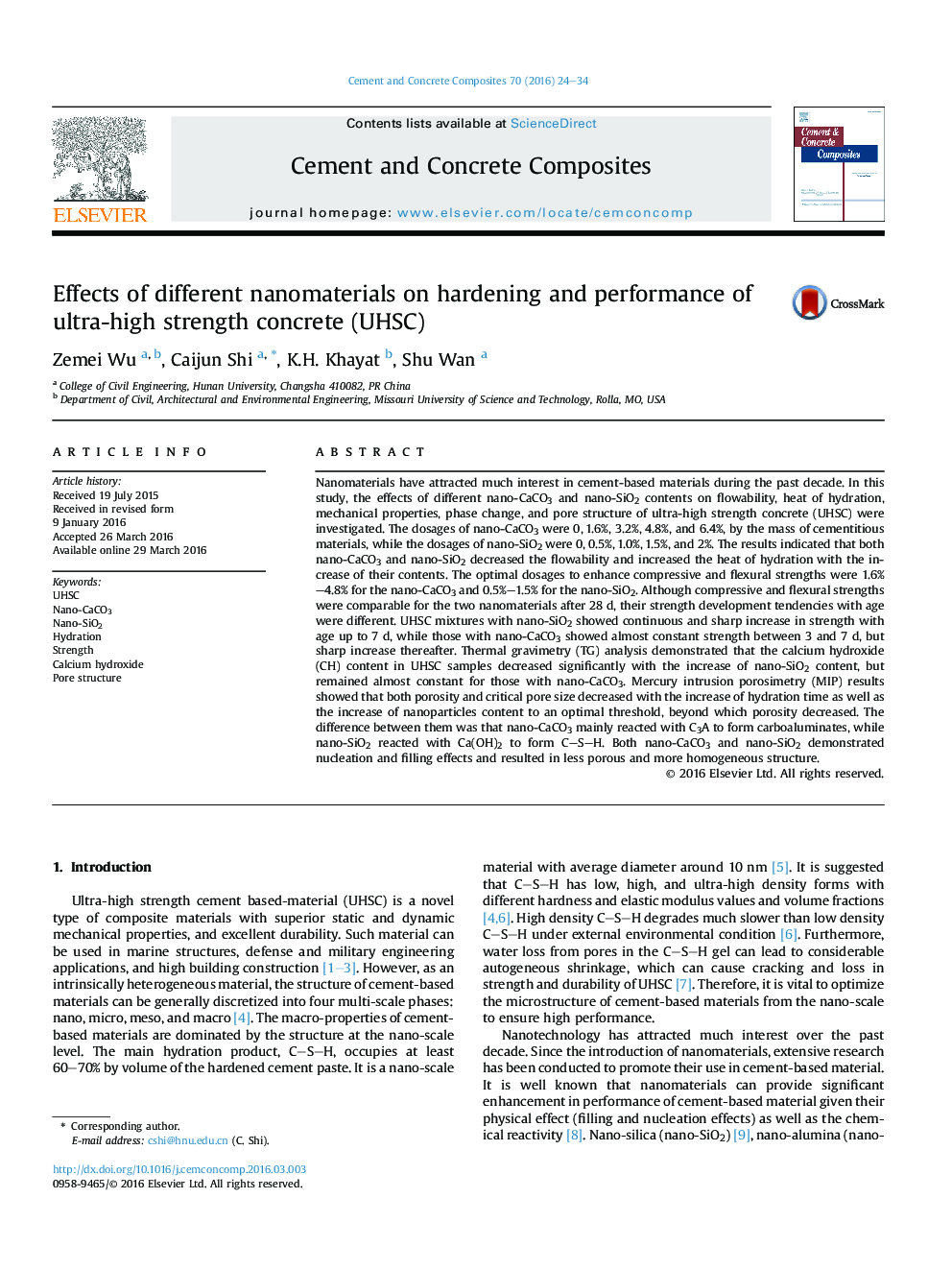| کد مقاله | کد نشریه | سال انتشار | مقاله انگلیسی | نسخه تمام متن |
|---|---|---|---|---|
| 1454326 | 1509663 | 2016 | 11 صفحه PDF | دانلود رایگان |

Nanomaterials have attracted much interest in cement-based materials during the past decade. In this study, the effects of different nano-CaCO3 and nano-SiO2 contents on flowability, heat of hydration, mechanical properties, phase change, and pore structure of ultra-high strength concrete (UHSC) were investigated. The dosages of nano-CaCO3 were 0, 1.6%, 3.2%, 4.8%, and 6.4%, by the mass of cementitious materials, while the dosages of nano-SiO2 were 0, 0.5%, 1.0%, 1.5%, and 2%. The results indicated that both nano-CaCO3 and nano-SiO2 decreased the flowability and increased the heat of hydration with the increase of their contents. The optimal dosages to enhance compressive and flexural strengths were 1.6%–4.8% for the nano-CaCO3 and 0.5%–1.5% for the nano-SiO2. Although compressive and flexural strengths were comparable for the two nanomaterials after 28 d, their strength development tendencies with age were different. UHSC mixtures with nano-SiO2 showed continuous and sharp increase in strength with age up to 7 d, while those with nano-CaCO3 showed almost constant strength between 3 and 7 d, but sharp increase thereafter. Thermal gravimetry (TG) analysis demonstrated that the calcium hydroxide (CH) content in UHSC samples decreased significantly with the increase of nano-SiO2 content, but remained almost constant for those with nano-CaCO3. Mercury intrusion porosimetry (MIP) results showed that both porosity and critical pore size decreased with the increase of hydration time as well as the increase of nanoparticles content to an optimal threshold, beyond which porosity decreased. The difference between them was that nano-CaCO3 mainly reacted with C3A to form carboaluminates, while nano-SiO2 reacted with Ca(OH)2 to form CSH. Both nano-CaCO3 and nano-SiO2 demonstrated nucleation and filling effects and resulted in less porous and more homogeneous structure.
Journal: Cement and Concrete Composites - Volume 70, July 2016, Pages 24–34